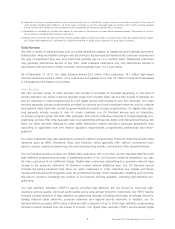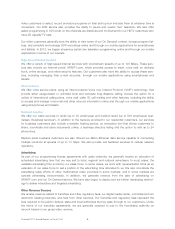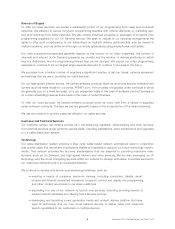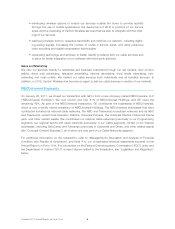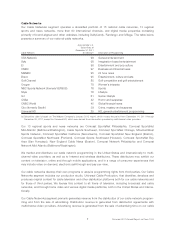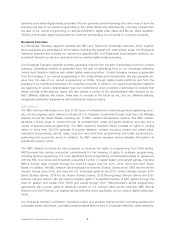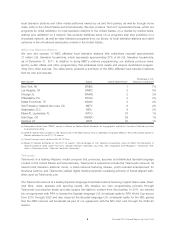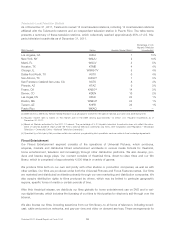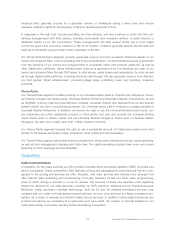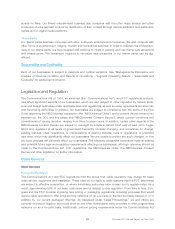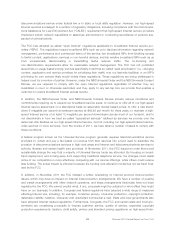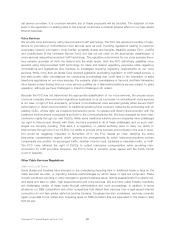Comcast 2011 Annual Report Download - page 15
Download and view the complete annual report
Please find page 15 of the 2011 Comcast annual report below. You can navigate through the pages in the report by either clicking on the pages listed below, or by using the keyword search tool below to find specific information within the annual report.Satellite Master Antenna Television Systems
Our cable services also compete for customers with SMATV systems. SMATV system operators typically are
not subject to regulation in the same manner as local, franchised cable system operators. SMATV systems
offer their subscribers both improved reception of local television broadcast stations and much of the pro-
gramming offered by our cable systems. In addition, some SMATV system operators offer packages of video,
Internet and phone services to their residential and business subscribers.
Other Video Competitors
Our cable services also may compete for customers with other companies, such as:
• online services and devices that offer Internet video streaming and downloading of movies,
television shows and other programming, which in some cases may be viewed on traditional
televisions or, more recently, on Internet-connected televisions
• local television broadcast stations that provide multiple channels of free over-the-air pro-
gramming
• wireless and other emerging mobile technologies that provide for the distribution and view-
ing of video programming online and through mobile applications using smartphones and
tablets
• video rental services and home video products
Some of these competitors offer their services for free or charge a nominal fee for access to their content.
High-Speed Internet Services
We compete with a number of companies offering Internet services, many of which have substantial
resources, including:
• wireline phone companies
• Internet service providers
• wireless phone companies and other providers of wireless Internet service
• power companies
Digital subscriber line (“DSL”) technology allows Internet access to be provided to customers over phone lines
at data transmission speeds substantially greater than those of dial-up modems. Phone companies and cer-
tain other companies offer DSL service, and several of these companies have increased transmission speeds,
lowered prices or created bundled service packages. In addition, some phone companies, such as AT&T,
Verizon and CenturyLink, have built and are continuing to build fiber-optic-based networks that allow them to
provide data transmission speeds that exceed those that can be provided with DSL technology and are now
offering these higher speed services in many of our service areas. The FCC has reduced the obligations of
phone companies to offer their broadband facilities on a wholesale or retail basis to competitors, and it has
freed their DSL services of common carrier regulation.
Various wireless companies are offering Internet services using a variety of types of networks, including 3G
and 4G wireless high-speed Internet networks (which employ LTE, WiMax and other technology standards)
and Wi-Fi networks. These networks work with devices such as wireless data cards and wireless embedded
devices, such as smartphones, laptops, tablets, and mobile wireless routers that connect to such embedded
devices. Some of these services are similar to ours. In addition, a growing number of commercial venues,
such as retail malls, restaurants and airports, offer Wi-Fi service. Numerous local governments are also con-
sidering or actively pursuing publicly subsidized Wi-Fi and other Internet access networks.
13 Comcast 2011 Annual Report on Form 10-K


